Quiet Walk? Floor Muffler? Need Help Choosing Underlayment?
We are installing a new Mirage Lock engineered floating floor and trying to decide the best underlayment to use. Mirage sells Uni-Mat 3 in 1 membrane but allows comparables for the warranty. I was quoted about $65 per 100 sq ft. roll for Uni-Mat.
We're installing most over a particle board subfloor with a little over (dry) concrete.
Our local flooring store sells Quiet Walk. I've read on this forum people using Floor Muffler. I think the Quiet Walk is more a recycled eco-friendly material where the Floor Muffler is a synthetic...right? (whatever that means) I really, ultimately hope for the quietest, most solid feeling floor I can possibly get.
Thanks for any and all the advice you can offer!
Comments (79)
Brandie May
3 years ago@SJ McCarthy sounds like I may need to rethink my selection of flooring material. The basement will be set up as an apartment for my grandma and we have two small children that jump and run a day. I want to have it as sound proof as possible.
Thank you for the information.SJ McCarthy
3 years agoThe EASIEST way to get the floor 'quiet' is carpet. It can be replaced when A. kids grow up and (in the sad event) B. Grandma no longer has use of the basement.
And remember: design it RIGHT from the BEGINNING. It will save you THOUSANDS of dollars in a retro fit. To design it PROPERLY you need an acoustic consultation along with your Architect's designs. Reach out to someone BEFORE they put up the framing. Even after framing is done, somethings might need 'redoing' because they have to make space for double studded/off-set studded walls with acoustic insulation AND acoustic drywall.
If you think of noise like water, you can image how noise moves. Like the Titanic, if you misunderstand the movement of water in a ship's hold, you will pay the price. If water can run underneath a door frame, then so can noise. If water can run down a floor vent, then so too can noise. If water can run down a pipe, then so too can noise.
To get a single family home up to par with a condominium living situation, you need to design it that way. You can't just throw some 'Rockwool' behind a regular wall or in a ceiling cavity and expect it to be noise/water tight. It doesn't work that way.
Close your eyes and imagine a MASSIVE pipe bursting in you UPPER floor. Now imagine, in your mind's eye, where that water runs. It goes DOWN the stairs (stairs LOVE to carry noise and echos). It runs under doorways (same as noise). It fills a room 'wall to wall' and then runs UNDER the drywall and into the walls of the house...just like noise. If you can image water SPLASHING hard against your front windows....you have just imagined how hard noise crashes into a glass surface and BOUNCES back into the room (echo).
Whew! Sounds fun doesn't it? Acoustics are fascinating AND frustrating at the same time. I suggest you get your Architect to reach out and do an acoustic assessment on your build. Sure it costs a few thousand...but it will be well worth it.Related Professionals
Bella Vista Flooring Contractors · Elkridge Flooring Contractors · Everett Flooring Contractors · Garland Flooring Contractors · Miami Flooring Contractors · Orlando Flooring Contractors · Eagan General Contractors · Arlington General Contractors · Bell General Contractors · Goldenrod General Contractors · Kailua Kona General Contractors · Leominster General Contractors · Oxon Hill General Contractors · Post Falls General Contractors · Sauk Village General Contractorsgc01480
3 years ago@SJ McCarthy ur truly awesome!! I really need help from someone who understands the mechanics of soundproofing :) we're actually installing laminate flooring and I've been doing tons of research on what material to use. It seems like rubber is the top contender for impact sound reduction but I'm looking at this product that's a foam and cork composite called ecocork and the iic numbers and reviews seem pretty impressive, what's your thought on ecocork vs quietwalk vs rubber?
SJ McCarthy
3 years agoEcocork has a VERY TINY amount of cork in it. So tiny you will see 90%/green foam with roughly 10% gold cork grains. The numbers from the ecocork comes from the 8" concrete slab (this is in the test chamber) and then they paid for isolation channels to be installed on the cement slab (underneath) and then they paid to have 5/8" acoustic drywall to be installed underneath the slab (using the acoustic channels) and then they paid to put down someone else's 3/4" 'floor'. We call this a 12" drop-down acoustic ceiling. The ceiling alone gives 18 dB worth of noise reduction.
The 8" concrete slab offers 30+ dB worth of noise reduction. Then inside this MASSIVE 23" thick sandwich they makers of Ecocork have thrown in a 3mm (1/8") of green foam and used the test number as if it is all down to the 3mm worth of foam. Which it isn't. The Ecocork is worth (roughly) 6 dB worth of insulation. If you look at 3mm of cork underlay (100% natural material) you get the same numbers.
Those big fat juicy acoustic numbers are fabricated. They always are. I wouldn't trust those Ecocork numbers any more than I could throw them.
Quietwalk is a different concept. It uses mixed (recycled) post-manufacturing materials. They 'felt it' together and then acoustic numbers from the Quietwalk (3mm) is roughly the same as 3mm of cork.
Rubber is a vastly different animal. Rubber is, technically the most efficient acoustic material, better than all of the materials you have looked at. Rubber is so good, it does the same amount of work as cork...but with 67% of the thickness.
In other words, 6mm cork offers the same numbers as 4mm of rubber. But rubber is almost 3x the price (per mm) as cork. Oh dear. Now that's a bit of a bummer.
You can purchase 6mm of cork underlay for $0.75/sf (https://www.icorkfloor.com/store/floor-underlayment-cork-6mm/ ) yet you will pay almost $2/sf for 4mm of rubber underlayment.
And then there is the smell of rubber. Rubber can cause breathing issues with people who suffer from asthma or who are allergic to latex/natural rubber (5-15% of all healthcare workers are either allergic to or will develop an allergy to latex/natural rubber). As soon as rubber heats up (as in a room full of sunlight...or on a hot summer evening) the rubber will emit a strong odour. This will continue for years. The off-gassing of rubber can be for the length of it's use (it only goes away when you rip up the floor and remove the rubber).
To get away from the horrible smell of rubber (imagine the smell of a 'tire shop' every time you come home from work) you need to spend ++ money. The 4mm rubber underlay just jumped to $3-$4/sf.
Now compare that to 6mm cork = $0.75/sf.
If you can only afford 3mm worth of product (that's the thickness of the Quietwalk or the Ecocork) you can look at 3mm cork underlay = $0.39/sf ( https://www.icorkfloor.com/store/3mm-cork-underlayment/ ).
For me, you don't get into 'ACOUSTIC' numbers until you reach 6mm of cork (or 4mm of rubber or 5mm of Quietwalk). Now you are getting into some SERIOUS costs (other than cork).
Remember: these 'big' acoustic numbers are gimmicks. Ecocork just about caught you with their gimmick. If you can't work with cork, my preference is the THICKEST Quietwalk you can find (not afford...FIND).Scotty D
3 years agoI’ m trying to reduce the sound from the main level to the basement so I just ordered some rubber, it is 2 mm, I’m putting it under LVP that’s 8 mm or thicker. I paid 43 cents per ft. I did a little research and found a very dense rubber, I’m hoping it works better with my LVP, I don’t want problems being to squishy and damaging my vinyl joints. I’m also putting insulation between my joists and decoupling my floor joists, then I will install two layers of 5/8 drywall on the ceiling below the LVP. This is a test to see if it works, but it’s still costly, I think I’m all in at about $3 a ft just for the sound isolation experiment.
SJ McCarthy
3 years ago@ Scotty Do your vinyl planks have an underpad attached to them? Do you know if the rubber underpad is rated for vinyl? Vinyl and rubber react (chemically) to on another. Rubber (like rubber entrance mats) can stain LVP a strong 'nicotine' orange.
I've also seen rubber react to cork underpad. I've had a customer who wanted more acoustic insulation than what the cork attached backing could give so they went with rubber underlay. Within a few weeks they had a strong chemical odour in their home. No matter how much they aired out their home, the smell remained.
It turned out to be the rubber chemically reacting to the binders in the cork underpad (on the planks). Once the rubber was removed, the odour went away. They were HORRIBLY upset.
Please be VERY careful with rubber + vinyl. They are both petroleum based products that have 'active' chemical compounds which can and will react (chemically) to other products.
It's the same reason why rubber mats are forbidden on vinyl, cork and hardwood.Scotty D
3 years agoThanks for the info, I think I’m leaning towards the Cortec Grande line of LVP, it has a 3mm cork backing.
Curtis Moore
3 years ago@Scotty D - How did the rubber and vinyl work out? Hows the acoustics from the below floor?
Scotty D
3 years agoI just picked up the flooring today, I hope to install in a couple weeks. I bought the rubber but I’m going back and forth on installing it, SK seems pretty knowledgeable and his concerns are viable. I was just going to float the rubber and then float the vinyl on top and may still do that. I’m also looking at gluing the floor down without the rubber but I’m just not sure how difficult it is to remove if I wanted or need to change it in 10 years. I’m sure that glue makes a mess of the subfloor. I’ve even thought about screwing down 1/4 plywood on top of my subfloor and gluing to that, it might be easier when it comes to changing out the flooring. I’ll have decided in the next couple weeks. We just finished drywall and now we are going to paint, trim and install cabinets then the floors and baseboards. Thanks for asking.
Scotty D
3 years agoI’m putting down Cortec Grande Golden Oak, it’s 15 mm thick including a 3mm cork backing.
SJ McCarthy
3 years ago@ Scotty - Go ahead and open up one end of the rubber roll. See how much odour it gives off. If it gives off very little (let it warm up in the house for a while...then set the roll close to where you sit...just to make sure you are getting a good 'whiff' of whatever is going to off-gass).
If you feel, after a few days, there is little to no odour I would say you are half way there. The other issue that *might occur is the cork will have a chemical reaction to the rubber and will create a COMBINED odour.
Other than that...I think your on your way.Alan W
2 years agoHi, I'm thinking of installing some QEP 1/4" cork as underlayment, with engineered hardwood (nailed down version) on top. The subfloor is plywood. Will this work? My main purpose is to reduce sound / footfall noise from main floor to basement. Thanks!
SJ McCarthy
2 years agoCork is awesome....but you cannot nail into it...ever. Which means you either glue the floor (double stick) or you float the floor.
Chuck Webb
2 years agolast modified: 2 years ago@SJ McCarthy I am installing Mohawk's Uniclic UltraWood Engineered Wood series on my second level. The subfloor is plywood. It is about 450 sf of flooring. Trying to determine the best method of installation to achieve that real "hardwood" non-clicky results. I started off determined to float the floor but started getting so much negative input that now I'm just about as confused as I can be. The reasons I wanted to float the floor so in the future if replacing had to be done. We removed our old glued down hardwood and it was a beast. We never had an issue with the clicky sound but I don't know if it was because it was real hardwood (not engineered) or because it was glued down. Anyways, what is your opinion? Should I stay the course with floating the floor. If I float what underlayment should I use? Reading this thread it sure doesn't seem as if you can just walk into a store and buy any underlayment because there are so many considerations. Will the only way to achieve the non-clicky is by installing using glue down method. If that is the method of choice what glue can be used that doesn't release toxins/VOC, etc, and will achieve the quiet sound.
SJ McCarthy
2 years agoIn a word: Preparation. Subfloor preparation is KEY to ANY successful flooring install. Make sure you have PAID FOR subfloor preparation that meets OR EXCEEDS the Manufacturer's recommendation. For wooden subfloors, that can mean $2-$4/sf. For concrete that can be $2-$5/sf and for gypcrete (lightweight concrete = looks white and powdery) it can be $3-$7/sf.
Once the subfloor is ready for your floor, you then put down the APPROPRIATE underlayment/pad. Mohawk has recommendations for their own underpadding. Traditionally these types of click together floors allow 3mm or 6mm cork underlay. In a home setting like yours I like the 6mm cork - just for the acoustic and thermal insulation....but 3mm is just fine if you are a quiet home to begin with.
Once the underlayment has been installed (which you have paid for...and paid the small upcharge for the installation labour = $0.50 - $1.50 depending on location and product chosen) the pro then goes ahead and lays the FLOOR.
You will notice how much MONEY AND ATTENTION is SPENT one everything other than the floor. That's because THOSE are the areas where the 'clicky clacky' comes from.
I would have to say 99% of all 'clicky clacky' complaints come from homeowners who have NOT paid for ALL THE EXTRAS. No subfloor prep was paid for = not done. The underlaymant was missing or they opted for the $0.20 stuff from HD (not worth the plastic it's made of).
To get a nice floor that is NOT noisy, you need to invest in everything around it. It is the secret in the 'secret sauce' of flooring installation.Chuck Webb
2 years ago@SJ McCarthy I'm definitely willing to spend the upfront cost to have the long term effects we desire. So how do you prepare a wooden subfloor? We have stripped everything to the bare plywood (original subfloor). What other preparation would need to be done? We purchased the product ourselves. I don't mind paying the $$ for preparation just don't know where you would find this person since flooring companies want you to purchase from them to install. Locatedin Orlando, FL. I definitely avoid HD and L with these types of huge projects.
Chuck Webb
2 years ago@SJ McCarthy Also, Mohawk recommends RealSound underlayment that is 3mm. I would opt for Cork if you felt it was an acceptable alternative to their underlayment. What Cork would you recommend? Are you familiar with a pro in this location to recommend?
Chuck Webb
2 years agoSJ McCarthy
2 years agoSure. You will LOSE 10-15% of the roll due to the inner curl. It is$0.72/sf as-is. But with 10% waste (subtract 19.4sf the price just went up to $0.80/sf. The price rises even more of you experience 15% waste (165 useable square feet) = $0.85/sf.
The flat sheets have ZERO waste. I would prefer to see that used.And, as usual, F&D has mucked up the advert. Cork underlay is NOT waterpoof. It is not antimicrobial ( it is but if it gets wet...Like all wood things will grow.
Cork is cork. It's awesome. Floor & Decor are NOT. Just remember that.Chuck Webb
2 years agolast modified: 2 years ago@SJ McCarthy So cork isn't a "mositure barrier" underlayment? (Project is on 2nd level with subfloor being plywood - removal of existing flooring, ie: carpet, did not indicate moisture) So would it be necessary to put a moisture barrier underlayment then the cork? Or just the cork will suffice? The sheets being the preferred way how does that work? Would you just lay them down side by side? What prevents them from shifting? Is it necessary to secure each piece together some way? As you can tell this isn't an underlayment that I am familiar with at all. Appreciate your honesty about F&D; I was looking for a local distributor that I could purchase the product. I'm thinking online is going to be the way to go. Any suggestions? I was hoping for a turn around time not to be WEEKS for delivery. I'm ready to get this project completed
Chuck Webb
2 years ago@SJ McCarthy the subfloor is wood so not sure if moisture barrier is required before using the cork?
Scotty D
2 years agoI used 2mm rubber as my underlayment for cortex vinyl flooring, I stapled it down, it was very easy to install and does a nice job on the sound, I don’t get any click clack sound, it’s sounds solid. I was concerned there might be smell from the rubber but that never really happened, there is a slight smell as a whole roll, but once it was down, there was nothing. I haven’t had any smell in 5 months. The rubber is very dense, I think it’s ground up tire rubber, you see thicker versions of this in gym floors. I bought it from a place in Idaho, isostore, they specialize in controlling sound transference. I think I paid about 40 cents a foot, but that was in December and I ordered 1500 sq ft. I’m not a big fan of the stuff they sell at HD, L, and FD for sound deadening, most of it is useless and hype. I think cork would be great also, I just think rubber is another viable alternative and it was very simple for me to install. All of that said, i probably won’t use vinyl flooring for my next house, I prefer top quality engineered wood or real wood, I just prefer the look and the patterns don’t repeat. SJ knows his stuff, his knowledge and experience are many times greater than mine, I’m a somewhat of a newbie to this.


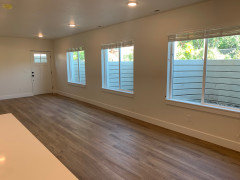
SJ McCarthy
2 years agolast modified: 2 years agoAnswer:
1. NEVER use moisture barrier on top of wooden subfloor (ever)
2. Sheet cork is held down by gravity AND the weight of the floor sitting on top (1000lbs of flooring is an EXCELLENT paper-weight)
3. Sheets are butted together - DO NOT tape or anchor them. The amount of NOISE tape makes as it deteriorates is HORRIBLE and ruin all the work you put in.
Your installer will know all of this - including the subfloor levelling/preparation.
HU-524005262
2 years agoSJ McCarthy You have been so informative. I have loved reading this thread. I have a concrete floor layed 40 yrs ago before they put moisture barriers in under the slab so moisture rises up. I am going to put down engineered timber. My builder said that a moisture barrier will be sufficient. I also want the ground to cushion footfall to protect my feet and back. Which underlay do you recommend, quiet walk plus or moisture barrier then 6mm cork, then the engineered timber. Do you think the moisture barrier will be enough to protect the cork and timber? One room seems to get a lot of moisture rising up into the slab. I can also get 5mm cork. Is that much different to the 6mm?
I will also want to lay cork underlay upstairs on the timber floor before adding engineered timber. Will that be enough to stop noise downstairs. If not what is the 2nd thing you would recommend also doing. I know there is acoustic insulation and my brother got thick gyprock and these little rubber things. In between the gyp rock. As I want the cork for softness will it be a good substitute for the rubber things and thicker gyprock? Would cork paired with the insulation be equivalent to my brother's set up which works very well? Can anyone including a non tradesman like me lay the cork underlay or does it require some skill? I was going to glue it as the feeling I am getting is that glued engineered floors are better (don't know if you think otherwise.) I will really appreciate it if you have the time to answer. Thank you for reading this.SJ McCarthy
2 years agoIf you want cork you must us 6mil or better vapour barrier. The Quiet walk with integrated vapour barrier is faster to us and thinner. If the wood runs up to the stairs, you will have to be careful. Stairs can add huge amounts of time, money and stress. Code of the stairs must be maintained. Thinness of under pad is vital around stairs. Too thick and you need to rebuild stairs. A thin underlay can save you $10,000+ dollars.
HU-524005262
2 years ago
Thank you so much for getting back. I really, really appreciate your time. Is the quiet walk thin enough for the stairs? With the quiet walk been thinner then then cork, does it still soften footfall to reduce sore feet, does the 6mm cork do a better job?SJ McCarthy
2 years agoOnly your professional can answer that. The floor coming off, the floor going down an d what you have on the stairs AND what you plan to do with the stairs will tell the boots on the ground how things will work. If you have not ASKED about the stairs, the GC will not mention it. You have to ask, and then you have to be ready to pay for stair work...If it comes down to that.
HU-524005262
2 years agoWe are rebuilding the stairs as prior to them being ripped out anyone taller than 5'6" would knock their head :)
SJ McCarthy
2 years agoThis is the perfect time to discuss details with the finishing carpenters about the floors and code requirements.
susanlynn2012
2 years agoMy prior wood floors used the floor muffler and it was warmer than what the installers used on my new wood floors (I had a flood and had to replace the floors over my concrete slab) and was quiet and felt like real hardwood floors and not engineered floated floors.
Matt Davis
2 years agoSJ McCarthy, I’m so glad I found this thread. Remodeling a walk out basement with concrete floors. Im using a 3/8” hickory hand scraped engineered hardwood from Shaw. I purchased Floor Muffler but now considering QuietWalk or cork. If I use cork I still need a moisture vapor barrier. Is there a product you recommend? Also could I use the floor muffler as the moisture vapor barrier (next to the concrete), then add 3mm of cork, then lay the floating floor? Thank you!
Matt Davis
2 years agoThinking this through I am guessing I would be better off just eliminating the floor muffler and using a standard 6mil moisture vapor barrier and 6mm cork? Lastly any recommendations when it comes to doing the stairs? Do I glue the cork to the stair subfloor then glue the engineered hardwood to the cork for both the stair and stair nose? It’s click flooring so I can’t nail it.
SJ McCarthy
2 years agolast modified: 2 years agoDo not glue cork underlay to stairs..ever! Not unless you want to pay for hospital bills and your legal fees. Cork underlay has NO structural integrity. You MUST REBUILD the stairs!!!!
susanlynn2012
2 years agoThank you SJ McCarthy for letting me know to never glue cork underlay to stairs.
Yewande Noah
2 years agoThis has been one of the most informative resources I've found so far. I'm trying to reduce noise between units in a duplex (upper and lower). I had the ceiling in the lower unit insulated which didn't do much, and now I'm planning to install vinyl plank flooring with the Eco Cork Foam underlay in the upper unit. The question I can't seem to find a direct answer to is: can I install the underlay + vinyl planks on top of hardwood floors? I'm extremely new to home DIY projects (so far, I've painted cabinets and installed doorknobs) so any and all input is appreciated!
Chen Xie
2 years agohi @SJ McCarthy, first of all, huge kudos to your helpful comments.
Question about the comment "NEVER use moisture barrier on top of wooden subfloor (ever)" -- We are replacing the existing nailed down solid hardwood.1. Do all nailed down solid hardwood floors have wooden subfloor?
2. And if yes, does it mean we should not use floormuffler or Silicone Paper as the underlayment? So the only option is red rosin paper?
Thanks!
gotoran
2 years agoSpeaking to a well known acoustics company here in Chicago, they said that 6mm cork is a decent material, but it does harden and crumble over time. He used the example of a wine cork. The wet end stays nice and pliable, but the dry end tends to keep drying out and will crumble over time. This is what he said happens under floors. He wasn't necessarily against cork, but he just wanted to make clear that it's not perfect. For sound insulation, he was a big fan of 1/2" cork.
I live in a high rise with 6" concrete slab subloor. I was looking into some nice LVP that comes with an attached 1.5mm layer of ixpe foam....feels pretty dense. The manufacturer says NO underlayment beneath because it will interfere with the 5G click lock mechanism, but I was thinking of maybe putting some kind of underlayment on top of the concrete, then dropping a layer of cement board on top, THEN the LVP. Thoughts? Not sure if cement board is the appropriate product for this purpose, but if not, something similar you'd recommend? I was hoping to keep the entire floor as water resistant as possible.
Audacity Flooring
last yearHave you set your heart on any product yet? If not, we'd recommend choosing one that already has an attached underlayment that helps with the acoustics of your room. Visit our website to know more: https://audacityflooring.com/
gotoran
last yearAs mentioned above, the flooring I'm looking at does indeed have an attached underlayment. The problem is that the IIC and STC ratings for the product assume a 1 ft. drop ceiling below the concrete floor and filled with acoustic dampening material. Most high rises only have concrete slab floors/ceilings, so the test ratings aren't accurate for our purposes. Delta IIC ratings come closer, but most products don't list their delta rating. It's a very vexxing problem.
emilydimitris
last yearI‘m remodeling with the click and lock waterproof engeneered hardwood on top of an 1980s concrete slab. This is the main floor so im not concerned with noise to another level. I don't like a bouncy feel at all (usually use a light pad or non at all under carpet to avoid a squish feeling) What’s the best floor prep for moisture barrier before laying the click and lick waterproof engeneered hardwood? floor muffler? quiet walk? thanks for your help!
daveberg12
last yearlast modified: last yearhi @SJ McCarthy, first of thanks for helpful comments. I am installing 12mm Lamintae flooring in a bedroom on a concrete floor, above ground in Florida. The room has carpet now. I am considering QuietWalk or Floor Muffler Ultraseal. What are your thoughts?
HU-217211091
last yearI am considering using 2 layers of plywood, 3/8' and 3/4', sandwiching a noise barrier such as quiet walk. The floor will be porcelain tile on 1/2" cement board. How effective would this be for reducing noise transfer to the room below and what alternative configuration do you suggest?
Greg Wilde
last yearlast modified: last yearThis post has some misleading comments regarding ecocork. I am investigating underlayment for vinyl plank. If you look at the actual test results from NGC testing services for the delta IIC of quietwalk LV, floormuffler lvt encore, and ecocork, they are all tested using the same 6 inch concrete slab (not 8 inches). The IIC and STC have other included materials in the test like insulation, gypsum ceiling, etc. But the delta IIC has only the concrete slab and measures the difference in sound dampening with and without the concrete slab in place telling you the true dampening of the underlayment itself. By this measure the quietwalk comes out on top with a delta IIC of 28, ecocork at 23 and floormuffler at 22. If you look at the frequencies, you can see that the quietwalk is the only material that has some degree of dampening of the lowest 100 hz tested around 5 db. The testing is slightly different in that the quietwalk was tested with a 5 mm vinyl plank on top whereas the ecocork was tested with a layer of engineered wood on top. The thickness of the engineered wood was not given. Floormuffler does not have a link for the actual test results. This article has a helpful explanation: https://arcacoustics.com/2016/08/23/stc-iic-delta-iicwhats-this-all-about/
robby_e573
last year@emilydimitris May I ask, what did you end up doing?
For anyone who may have advice, we just bought a condo that is ground floor above grade on concrete. Previous owners had some leaks and did not fix flooring, which is lifting in places and old carpet needs to be taken out as it is in bad shape. So, we are hoping to install engineered wood. Despite all our research, so confused about what is best practice to prevent moisture issues and mold (in southeast with humidity). We were looking at thicker wide planks that can be refinished. (We liked the look of Floor & Decor woodland reserve flex tech, it’s thicker, however has nothing attached to back). A couple of recommendations we received said take everything out then lay down FloorComfort 2mm and float the planks. Another said paint a vapour barrier and glue down the planks, or lay down QuietWalk and float them. Other advice I’ve read said don’t do any of those things! So lost and confused!! :’)

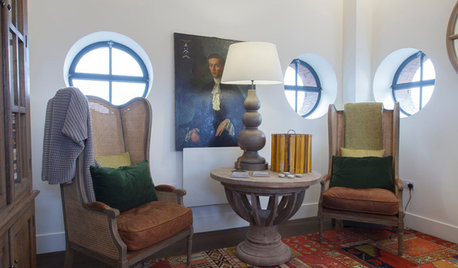
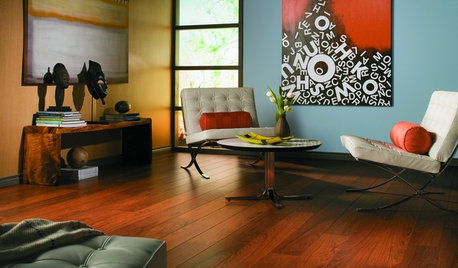


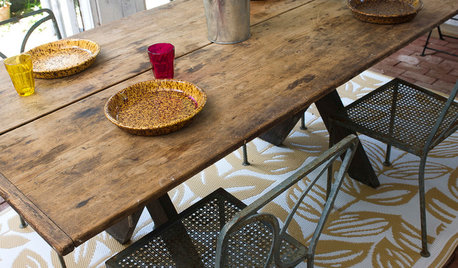
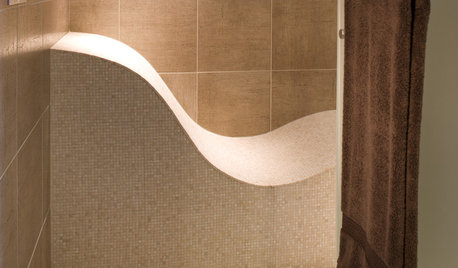
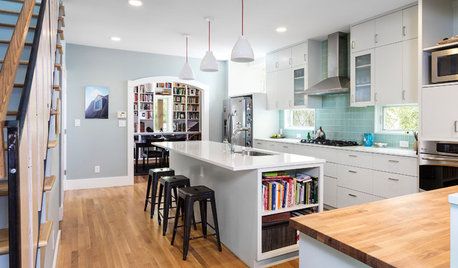
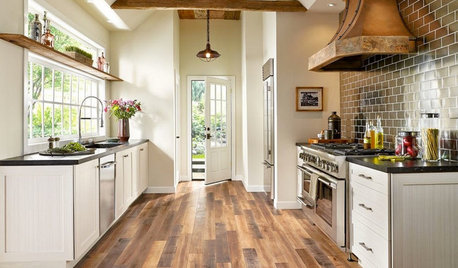
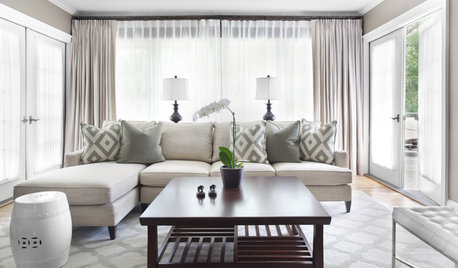








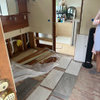

Hardwood Floors Outlet Murrieta